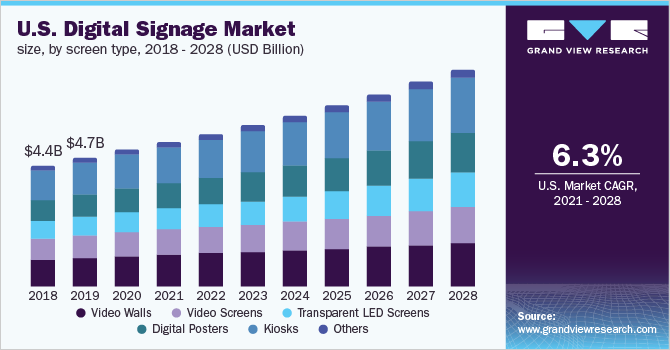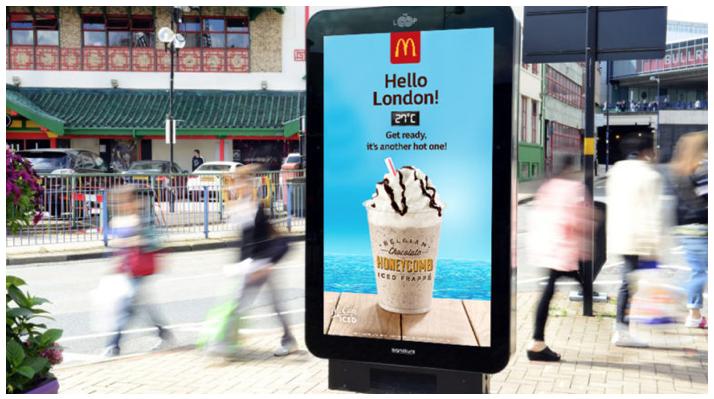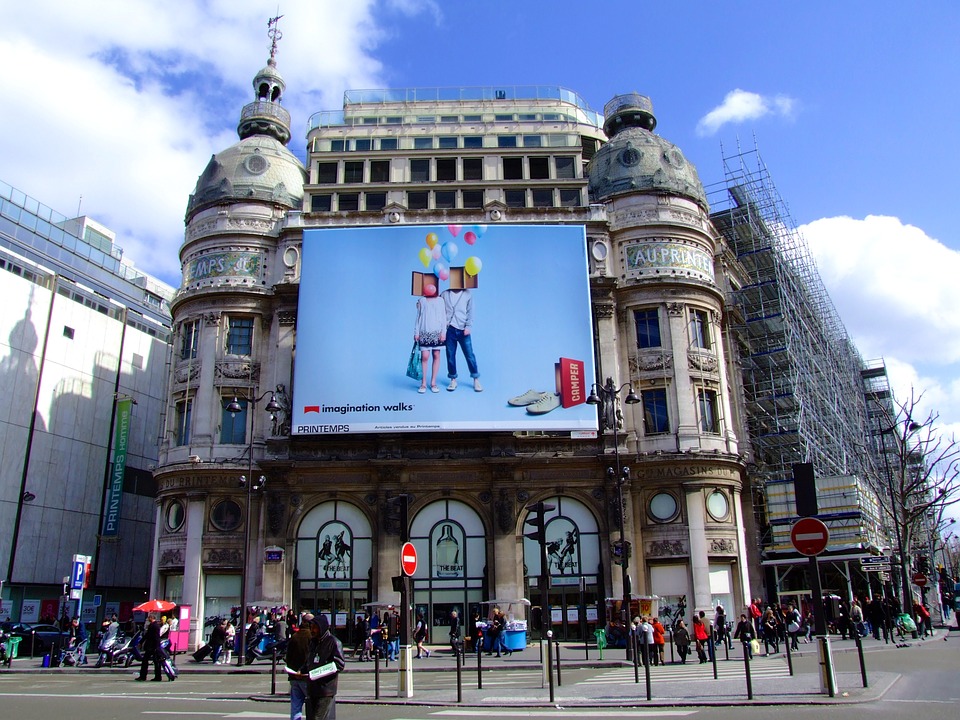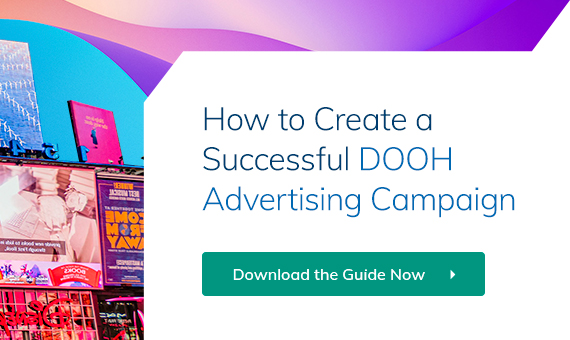Whilst it’s easy to assume that the proliferation of digital signage represents the pinnacle of what digital out of home (DOOH) advertising can achieve, the medium is only getting started.
Opportunities for large-scale digital public and outdoor advertising have increased in recent years, opening doors for dynamic creative and analytics based on location data or location-based mobile data.
Where do things go from here?
First, we have to consider just how much growth potential the global market for DOOH has. From there, as automation and real-time reporting make processes more efficient, we’re looking at a complete transformation of what digital OOH could offer businesses.
Digital Out of Home Advertising Is Expanding Rapidly
OOH advertising spend is once again on the rise, following a global slowdown in 2020 during lockdowns. In 2021, however, we’re seeing a bounce back, with out of home forecast to be the second-fastest growing medium as ad spend rises by 20.2%.

(Image source: warc.com)
But what about digital out of home specifically?
Well, the first point to consider is that digital OOH revenues comprised a relatively small share of the OOH market in the mid 2010s but have grown rapidly since.
In fact, DOOH accounted for a third of all OOH spend in 2020, doubling its share from just 17% in 2015. By 2023, 42% of all US outdoor ad spending will come from DOOH.
This is down to both customer enthusiasm for digital OOH and a significant proliferation of inventory.
For example, from 2017 to 2019, the number of total digital displays in Outfront Media’s US portfolio increased from 1,693 to 7,266. Meanwhile, estimates from the Outdoor Advertising Association of America (OAAA) reveal that there were 5,742 digital street furniture outdoor ad placements, 7,847 digital transit displays and 5,830 digital shopping mall place-based ad units in H1 2020. The number of roadside digital billboards grew 43.3% between 2016 and 2020 – from 6,700 to 9,600.
As digital inventory becomes more widespread, it will also become more affordable. This will start to open up DOOH to sections of the market (for example smaller businesses) that have previously felt priced out.
The Future of Digital Out of Home Is Programmatic
Until recently, digital OOH was always bought and sold just like traditional OOH – via time-consuming media buying processes, often with a significant amount of third-party involvement. This created two major barriers standing in the way of widespread adoption:
- Smaller and lower-budget marketing teams struggled to commit to DOOH campaigns as the purchasing journey is so resource-intensive.
- Marketing teams have lacked visibility into the success of their DOOH campaigns due to delayed reports and lack of real-time analytics.
The advent of programmatic DOOH (pDOOH) tears down these barriers by:
- Automating DOOH inventory purchase via a bidding process similar to how we currently buy advertising space online.
- Removing intermediaries from the process to reduce delays and offering campaign analyticsin real time.
Using programmatic buying methods, advertisers can specify the conditions under which their creative is displayed. Media buyers can now ensure that their ad can be shown:
- On specific days, or at specific times.
- When passing foot traffic hits a certain level, based on location data or location-based mobile data.
- When external conditions meet specified criteria, for example temperature or pollen count hitting a certain level, or weather conditions in general.
- Based on internal metrics (for example, a museum in Amsterdam used pDOOHto show ads to tourists only when ticket sales were low).
This allows unprecedented opportunity to target based on audience receptiveness to your message at any given point. Traditionally, the value of OOH was centered around how many people it could reach.
Programmatic DOOH brings real-time campaign analytics and audience targeting capabilities that marketers have come to expect elsewhere into the out of home advertising space.
The Future of Digital Out of Home is Location-Based
DOOH advertising can have a major impact for local businesses looking to attract passing trade. Town and city center billboards at major points of interest attract a lot of attention, making them perfect for reaching an enthusiastic, ready-to-buy audience.
According to Nielsen, 65% of viewers that noticed directions to businesses in digital street level ads immediately visited a business after exposure. Of those who visited the business, 92% made a purchase on that visit.
It’s easy to see how this works. Using pDOOH, a local bar could use outdoor advertising to signpost punters to its beer garden on hot weekends or Friday afternoons.
Or a sports shop selling home team merch could buy ad space in the run up to a big game, using location data or location-based mobile data to guarantee ads displayed in areas with lots of passing footfall.
Programmatic OOH media offers local businesses additional contextual relevance to their outdoor strategy. At the same time, it removes major time and cost barriers that have previously prevented smaller local businesses using the technology.
We see major brands using location-based pDOOH already, as in the example from McDonalds below. As pDOOH makes things more accessible, there’s potential for smaller businesses to start using it in a similar way.

(Image source: clickz.com)
Find the Right Programmatic DOOH Platform
Programmatic DOOH transforms how you run your DOOH campaigns – so long as you have the right programmatic buying platform in place to support you.
By this, we mean a programmatic buying platform that automates the ad buying process, connects you directly to media owners and offers real-time analytics whilst remaining intuitive and easy to use.
The Neuron finds the inventory you need in just a couple of clicks. Upload your creative and get real-time analytics on campaign performance in seconds for a targeted, measurable and effective digital OOH strategy.
Download The Digital Marketer’s Complete Guide to Using DOOH, or get in touch for more information.


